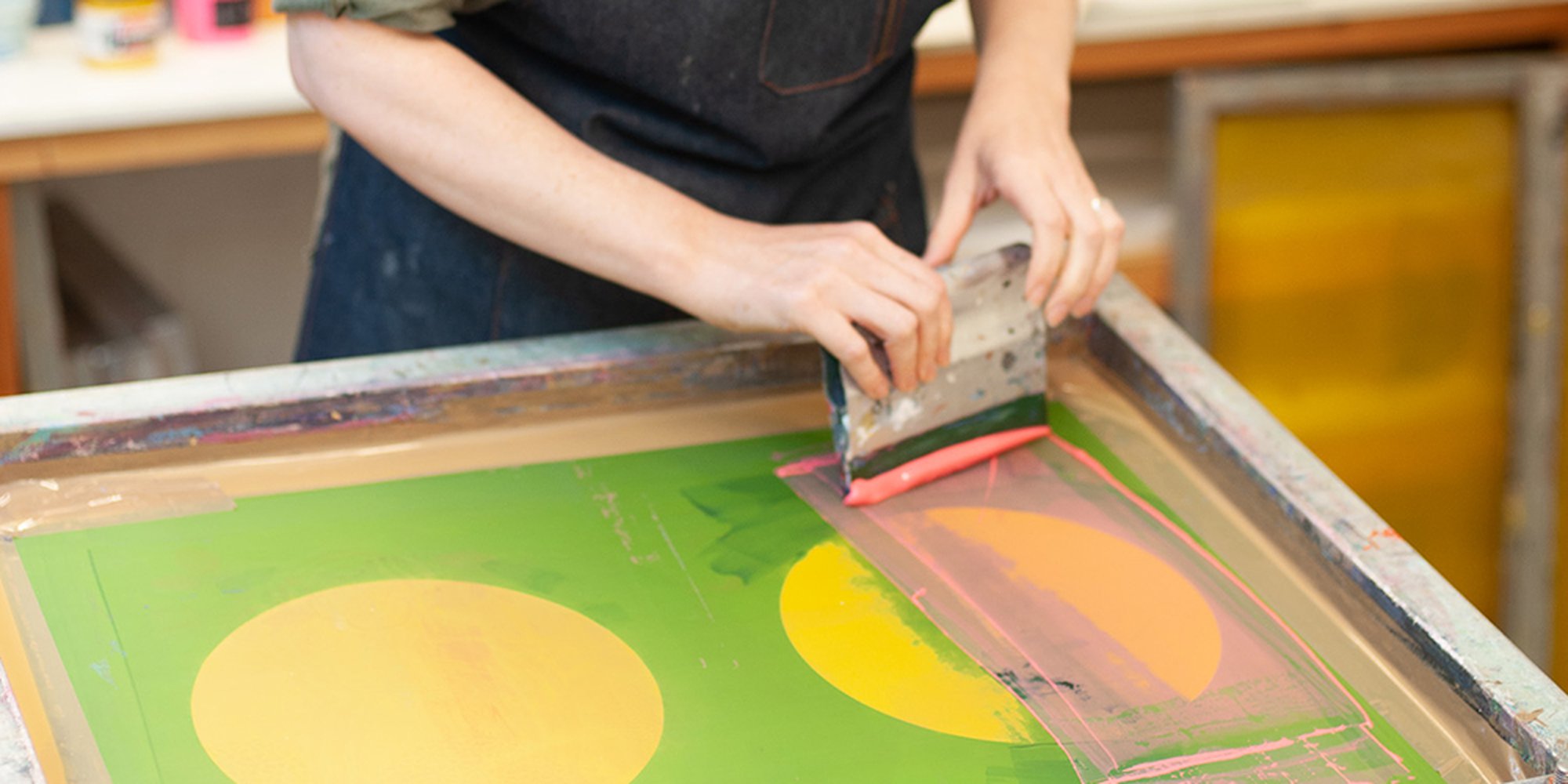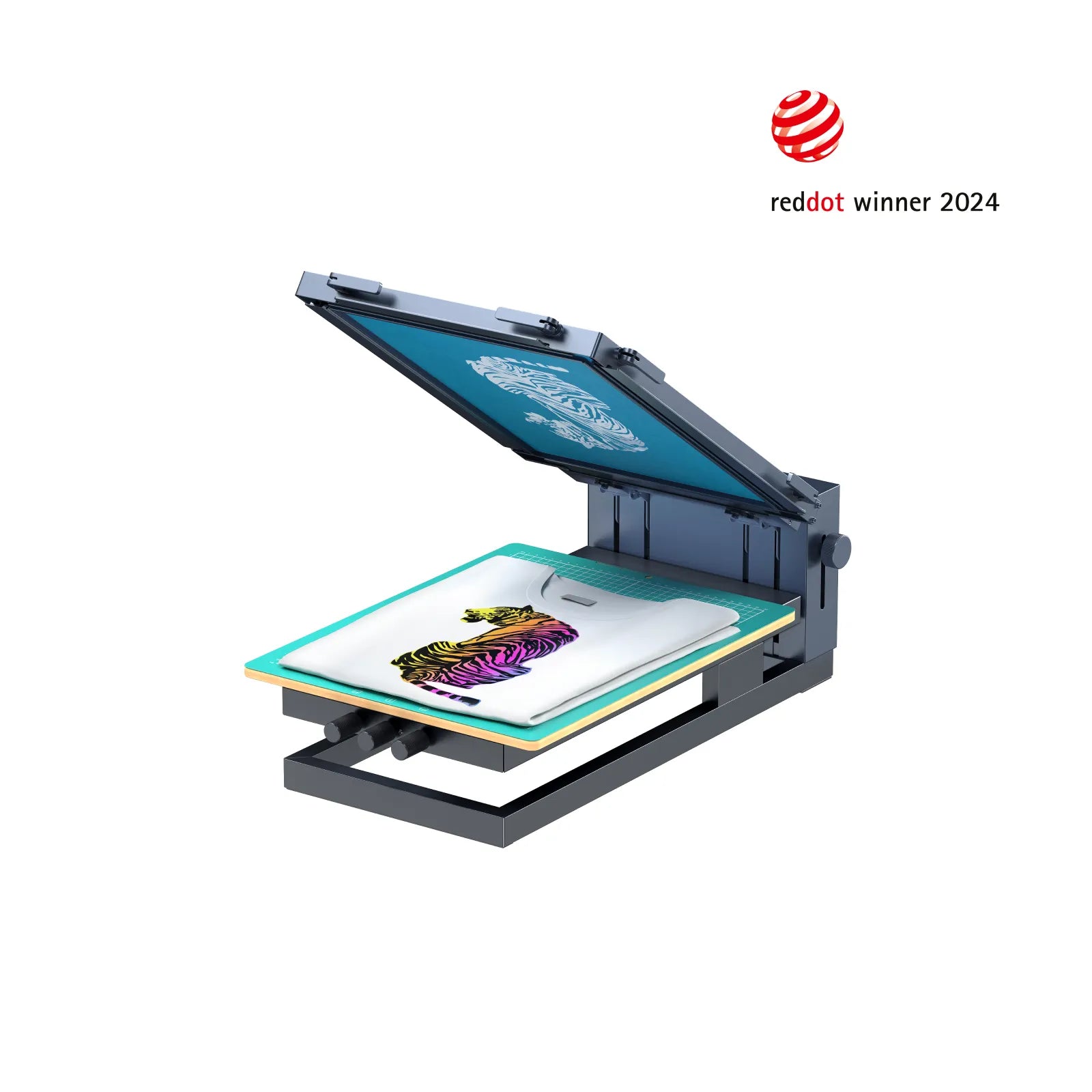The Important Guide to Comprehending Screen Printing and Its Versatile Utilizes
Screen printing has an abundant history that dates back to ancient times, progressing into an advanced strategy made use of across different sectors today. This guide checks out the intricacies of the screen printing process, outlining its applications in fashion, home, and marketing design - 10:9 Design reviews. Understanding these fundamentals can open up creative potential for both business and artistic jobs. The complying with sections will disclose necessary ideas and techniques to boost one's screen printing undertakings
The History of Screen Printing
Although screen printing has roots that trace back centuries, its evolution mirrors the technical and imaginative innovations of various cultures. Coming from in ancient China, the technique was at first used for enhancing textiles and later infect Japan, where it came to be indispensable to Ukiyo-e woodblock printing. The technique moved to Europe in the 18th century, where it acquired appeal among craftsmens and business printers. The innovation of photo emulsion in the 20th century reinvented screen printing, enabling more elaborate layouts and higher effectiveness. Musicians like Andy Warhol even more moved its appeal, using the tool to create legendary jobs that blended commercialism and fine art. By the late 20th century, screen printing had actually established itself as a versatile method, employed in style, advertising, and great art. Today, it proceeds to progress, integrating digital technology and increasing its applications across numerous markets.
The Screen Printing Process Explained
Screen printing transforms artistic visions into concrete designs via a collection of accurate steps. A picture is produced and then moved onto a screen, typically made of great mesh material extended over a structure. A light-sensitive solution is put on the screen, which is revealed to light, setting in locations not covered by the photo. After rinsing the unhardened emulsion, a stencil is formed.
Next off, the screen is positioned over the substratum, whether it be textile, paper, or one more material. Ink is then pushed through the open areas of the pattern making use of a squeegee, transferring the style onto the substratum below. This procedure can be repeated for multiple colors, requiring different screens for each and every tone. Ultimately, the printed product is healed utilizing warmth to assure the ink sticks effectively, causing a long lasting, lively design ready for use.
Kinds of Screen Printing Techniques

Furthermore, specialty strategies, such as discharge screen printing, get rid of color from the textile to develop softer prints, while aluminum foil screen printing uses metal aluminum foil to accomplish a shiny finish (10:9 Design Abilene). Each technique offers distinctive attributes, dealing with numerous innovative needs and production scales, inevitably broadening the possibilities within the screen printing domain
Applications of Screen Printing in Numerous Industries

Additionally, the signs and marketing industries utilize screen printing for creating attractive displays and banners. This approach permits for strong colors and intricate styles that catch attention. In electronics, screen printing is used for applying conductive inks to motherboard, crucial for element connections. The home design sector accepts screen printing to generate unique layouts on textiles and wall surface art. Generally, screen printing functions as a vital tool across varied fields, boosting products with customized and visually attractive graphics.
Tips for Successful Screen Printing Projects
While taking on a screen printing job, mindful attention to information can substantially enhance the last outcome. Picking top quality products is essential; this consists of the screen, inks, and substrates. Utilizing appropriate mesh counts can impact ink deposition and information resolution. more info Preparation is similarly crucial; thorough cleaning of displays and appropriate direct exposure times assure crisp prints.
Next, accurate registration is essential for multi-color prints. Utilizing positioning devices can aid achieve accurate layering. Furthermore, screening prints on scrap products before production helps recognize potential issues without losing sources.

Regularly Asked Questions
What Products Are Best for Screen Printing on Material?
Cotton and polyester blends are ideal for screen printing on fabric due to their durability and ink absorption. Furthermore, specialized fabrics like silk or canvas can create one-of-a-kind textures and surfaces, boosting the overall style quality.
How Do I Clean and Maintain Screen Printing Devices?
To cleanse and maintain screen printing tools, one should consistently wash screens with ideal solvents, inspect squeegees for wear, lube relocating components, and shop all items in a dry, dust-free atmosphere to lengthen their lifespan.
What Are the Environmental Effects of Screen Printing?
Screen printing can have considerable ecological impacts, including chemical waste from solvents and inks, water use during cleaning processes, and power consumption. Environmentally friendly products and sustainable practices are essential for lessening these adverse effects.
Can Screen Printing Be Done in the house Efficiently?
Screen printing can be properly done at home with the best products and strategies. Enthusiasts can create high quality prints, though success depends upon their ability level, devices, and understanding of the process entailed.
What Are the Costs Connected With Starting a Screen Printing Service?

Starting a screen printing company includes expenses for devices, products, and workspace. Preliminary expenditures typically range from a few hundred to several thousand bucks, relying on the range, high quality of machinery, and desired manufacturing ability.
Screen printing has an abundant history that dates back to ancient times, developing into an innovative method made use of across numerous industries today. An additional strategy, rotating screen printing, utilizes cylindrical displays, facilitating continual printing on material rolls, consequently improving efficiency for large-scale manufacturings. Additionally, specialized techniques, such as discharge screen printing, remove color from the material to produce softer prints, while aluminum foil screen printing applies metallic foil to achieve a glossy finish. In the fashion field, screen printing is commonly utilized to develop lively styles on garments, allowing brand names to showcase their distinct styles. Cotton and polyester blends are suitable for screen printing on material due to their durability and ink absorption.